Which of the many methods to use? How to create pressure in the heating system
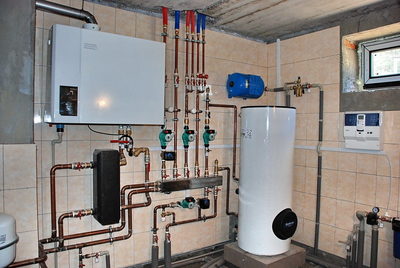
The operation of a central heating system is impossible without such a physical concept as pressure.
It is important to control its level, because the efficiency of heating the premises depends on this and, most importantly, operational safety.
Too much pressure in the pipes can lead to a leak or even a breakthrough of the heating system with all the sad consequences for the tenant and neighbors. And if the indicator is too low, the temperature in the room will not be maintained at the required level.
Pressure is the force that acts on the walls of a pipeline, radiators And on the coolant itself, forcing it to move along the contour and perform its main function: heat transfer.
Content
- Types of pressure
- How to Create and Add Pressure to a Heating System
- How to calculate
- Maintenance
- Pressure drop
- Hydraulic calculation and installation of pipelines
- Effect of coolant temperature
- Circulation pumps
- Expansion tank for regulating the indicators
- Regulators, valves
- Resetting the indicators
- Measurement with manometers
- Useful video
- Conclusion
Types of pressure
The pressure in the heating system is divided into static and dynamic.
Static
Hydrostatic pressure is the pressure exerted by the sheer weight of water in a system., it depends on the height of the water column, and therefore on the number of storeys of the building. At the highest point of the contour it equals zero.
Reference. For every 10 meters static pressure changes with height per 1 atmosphere (~101 kPa).
Dynamic

Such pressure is created primarily by circulation pumps, and also convection (movement of liquid due to temperature differences) when heated.
In addition to the above, the dynamic level is affected by heating regulators installed on radiators and in the boiler room.
How to Create and Add Pressure to a Heating System
To create or add pressure in the heating system, several methods are used.
Pressure testing
Pressure testing is the process of initially filling the heating system coolant with temporary creation of pressure exceeding the working pressure.
Attention! For new systems, the pressure during commissioning must be 2-3 times more normal, and during routine checks an increase is sufficient by 20-40%.
This operation can be performed in two ways:
- Connecting the heating circuit to the water supply pipeline and gradual filling of the system to the required values with pressure gauge control. This method is not suitable if the water pressure in the water supply is not high enough.
- Using hand or electric pumps. When there is already a coolant in the circuit, but there is not enough pressure, special pressure testing pumps are used. The liquid is poured into the pump tank, and the pressure is brought to the required level.
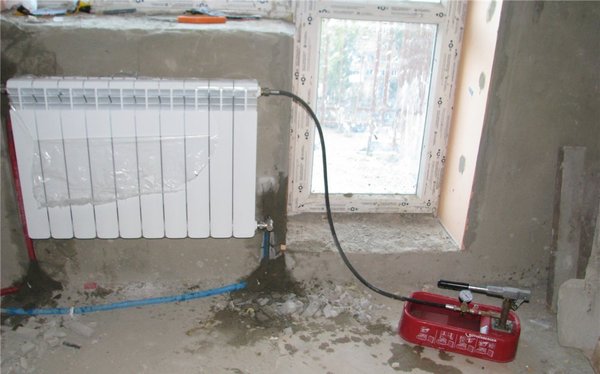
Photo 1. The process of pressure testing the heating system. A manual pressure testing pump is used.
Checking the heating main for tightness and leaks
The main purpose of pressure testing is to identify faulty elements of the heating system in the extreme operating mode in order to avoid accidents during further operation. Therefore, the next step after this procedure is to check all elements for leaks. The tightness test is performed by the pressure drop during a certain time after pressure testing. The operation consists of two stages:
- Cold check, during which the circuit is filled with cold water. Within half an hour, the pressure level should not fall more than by 0.06 MPa. For 120 minutes the fall should be no more than 0.02 MPa.
- Hot check, the same procedure is carried out, only with hot water.
Based on the results of the fall, conclusion about the tightness of the heating systemIf the test is passed, the pressure level in the pipeline is reset to operating values by removing excess coolant.
How to calculate
Calculating the pressure in a heating system necessary for two reasons: to ensure circulation of the coolant and to prevent depressurization of some elements of the circuit due to exceeding their working pressure.
Reference. The maximum working pressure is indicated on the components themselves or in their passport. For example, for polypropylene pipes it is 4-6 atm, for many cast iron radiators - 5 atm. The calculated pressure must not exceed the permissible pressure of the “weakest link” of the heating circuit.
In order for the coolant to move through the pipeline, it is necessary to create a dynamic pressure greater than the static pressure:

- In a natural circulation scheme - slightly exceeds the static level.
- With forced circulation, the dynamic value should be as large as possible than the static value to obtain maximum efficiency.
The formula for determining hydrostatic pressure is p = ρgh, or, simplifying for water - p = 10000h, Where h — the height of the water column in the heating system.
The working pressure is defined as the sum of the static pressure at a given height of the circuit and the dynamic pressure created by the pump or the convection process. The maximum impact on the pipes is created at the lowest point of the system, while at the top it is minimal.
Maintenance
Once configured and launched, the heating system cannot work forever: over time the characteristics deteriorate, which leads to poor heating of the premises. The indicator of the quality of the heating is the pressure, by its changes one can judge the problems.
For forced circulation heating, pressure drop may be caused by the following reasons:
- leaks in the circuit;
- problems with pumps (malfunction, contamination, poor power supply);
- damage to the expansion tank membrane;
- safety unit malfunction.
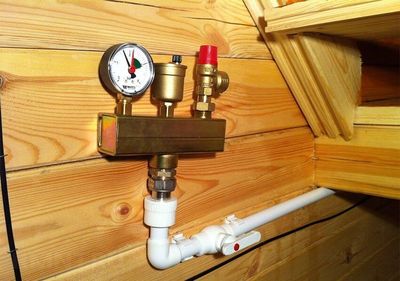
The following may lead to increased pressure:
- too high coolant temperature;
- small cross-section of the pipeline;
- contamination of filters or coolant;
- formation of air locks;
- Incorrect pump operation mode.
In a heating system with natural circulation, the problem of pressure increase does not arise, but its decrease may occur, however This is a normal process.
The thing is that natural circulation implies self-regulation of the coolant pressure. It moves through the pipes due to the temperature difference between the return and supply: less dense hot water floats up. Accordingly, the higher the temperature set on the boiler, the greater the pressure. But the temperature difference will decrease when the rooms are heated, so when the desired air temperature in the room is established, the pressure will drop.
Pressure drop
The pressure drop in heating is the difference in pressure between the supply and return pipelines, due to which the circulation of the coolant is carried out. The drop is the working pressure of the system. Its required value depends on the height of the building:
- in one-story houses in the natural circulation scheme - 0.1 MPa for every 10 m of height;
- in low-rise buildings in a closed scheme — 0.2-0.4 MPa;
- in high-rise buildings — up to 1 MPa.
Hydraulic calculation and installation of pipelines
Hydraulic calculation is produced at the design stage and is the basis for the functioning of the system. The formulas of hydraulics are quite complex and are beyond the scope of this article, so we will list their main consequences, showing that can affect the pressure drop:
- Pipeline material. Rougher ones, such as asbestos cement or steel pipe, will slow down the flow of liquid after long-term use.
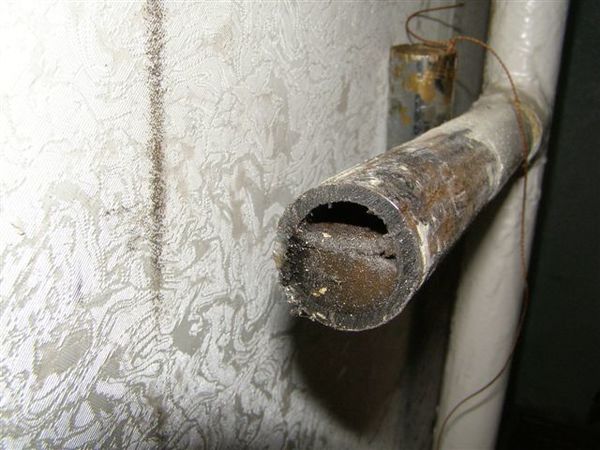
Photo 2. Clogged heating pipes. This can cause pressure in the heating system to be disrupted.
- Transitions from a larger section to a smaller one.
- Turns, bends — increase the hydraulic resistance of the pipeline.
- Internal structure of radiators And their cross-section.
- Shut-off and control valves.
During the calculations, the speed of water movement is also determined, its optimal value is 0.3-0.7 m/s. At lower values, air locks may form and the temperature spread between radiators may be too large, while at higher values, noise from liquid movement will occur and wear of the pipeline by small abrasive particles in the coolant will increase.
Effect of coolant temperature
When heated, water increases in volume and thus leads to an increase in pressure. For example, at a temperature 20 °C he can grow up by 0.1 MPa, and at 70 °C by 0.2 MPa. Thus, changing the degree of heating of the water can also be used to regulate the pressure.
Circulation pumps
The task of the circulation pump is create a pressure difference for the movement of the coolant. In low-rise buildings, one pump installed at the lowest point of the system is sufficient.
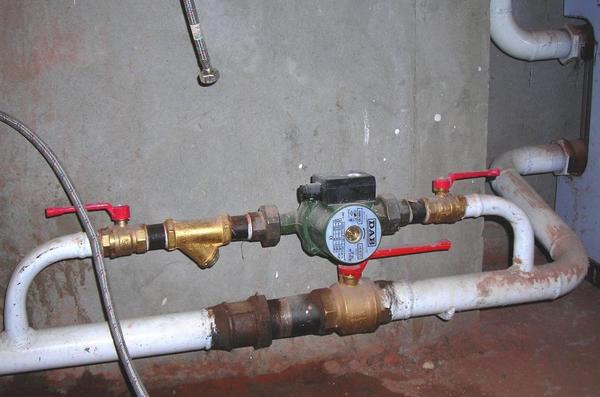
Photo 3. Circulation pump installed in the heating system. The device pumps the coolant through the pipes.
In high-rise buildings the problem pressure differences between the lowest and highest floors becomes more acute, since the static pressure of the water column is significant. To equalize the pressure in such buildings, specialized booster pumps are used.
Expansion tank for regulating the indicators
The expansion tank is a very important part of the heating system. It is necessary because the liquid is almost incompressible, so during pressure surges and water hammers it may damage piping, radiators and other components. The expansion tank takes on this difference.
Different designs use different tanks. In a natural circulation system, it communicates with the atmosphere and is open, installed at the highest point of the circuit. When the water pressure in the system increases, its level in the tank will rise until it reaches the overflow tube connected to the sewer.
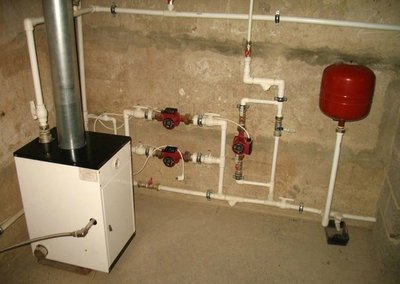
Since the circuit with such a tank communicates with the atmosphere, corrosion appears in it, and the liquid gradually evaporates from the open surface of the tank and its level must be monitored.
In a closed forced circulation system, the expansion tank is designed in the form of a container with an elastic rubber membrane, filled with compressed air on one side and a coolant on the other.
When the volume of the latter changes, the air is compressed or discharged, stabilizing the pressure in the system.
Regulators, valves
In small buildings, an expansion tank is sufficient to compensate for pressure differences, but in high-rise buildings with a complex heating system configuration, special pressure regulators must be used. A sensitive membrane or piston measures it at the location where the regulator is installed, and the pressure is changed using a force element: a weight or a spring. Regulators are divided into three types:
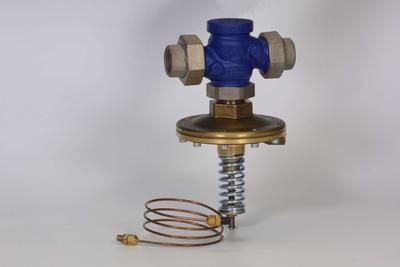
- "After itself" (pressure reducing valves) — block the flow cross-section, thereby reducing the pressure to the set level in the section behind them.
- "To yourself" (bypass valves) — set the pressure before themselves, bypassing excess coolant into the return pipeline.
- Differential regulators — maintain a given difference between the two sections using a two-way valve that compensates for the pressure drop.
Resetting the indicators
Manual reset is carried out by removing excess volume of coolant from the drain valve, as well as by changing the degree of inflation of the expansion tank membrane.
In case of an emergency, it will help to quickly relieve the pressure safety relief valve. There are models with fixed and adjustable values. The required value should be higher than the operating, but less than the maximum permissible pressure in the entire circuit. When the set level is exceeded, the valve membrane opens and excess coolant is drained into the sewer.
Measurement with manometers
Pressure gauges are instruments with a round scale and a pointer, indicating the current pressure. They are installed at critical points in the circuit through a three-way valve: after the boiler, on branches, at pumps, in the safety group. When choosing a pressure gauge, consider its maximum value that it can measure. Too large (for example, 50 atm in a system with 4 atm) will lead to inaccurate readings, and a small one can damage the measuring device.
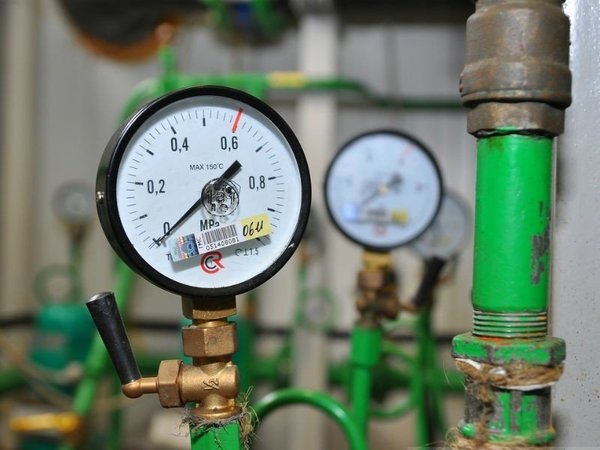
Photo 4. Pressure gauge for measuring pressure in the heating system. The device is a dial with a scale applied to it.
Useful video
Watch a video that explains what can cause pressure surges in the heating system.
Conclusion
Controlling and maintaining pressure in heating systems is of paramount importance. It is not so bad if insufficiently high pressure leads to poor heating of premises. It is much worse when its excess will cause a rupture of radiators or pipelines, which can lead to severe burns or flooding buildings. Therefore, safety is paramount. It is necessary to follow the regulatory procedures described in SNiP and regularly service the heating system if the pressure values exceed the established standards. Then the heating in the house will be as efficient and safe as possible.






